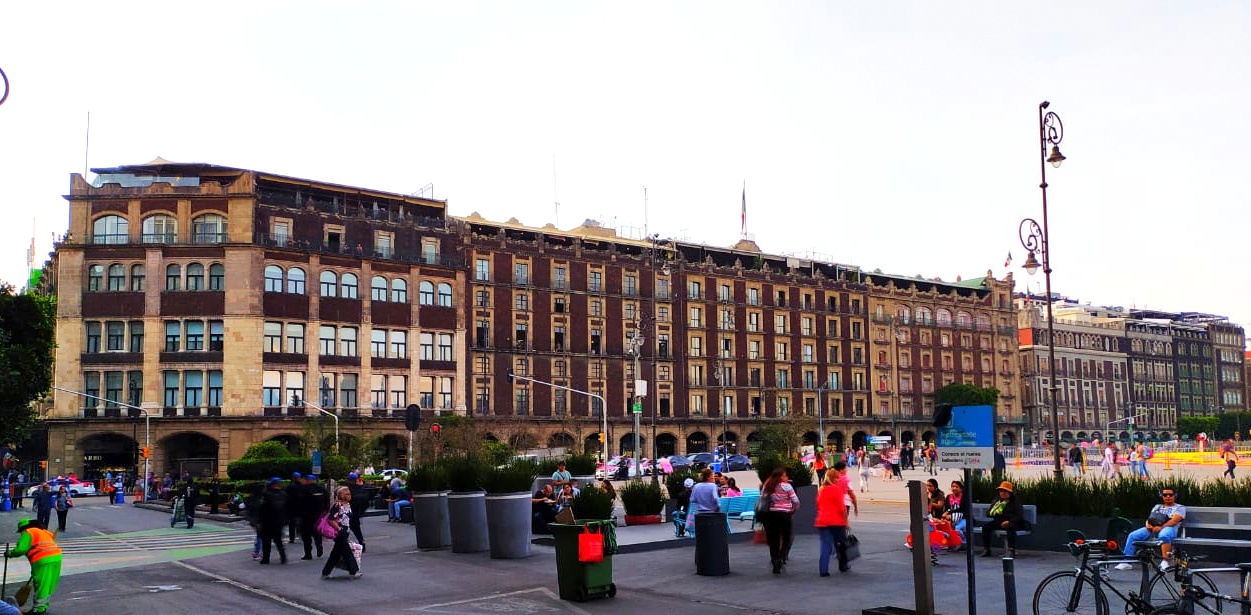
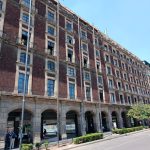 The Portal de los Mercaderes was begun in the 16th century as a series of covered walkways with permanent and semi-permanent shops of exotic and luxury goods. Popular devotion to a Christ of Patience resulted in the "Santo Ecce Homo del Portal" (The Ecce Homo of the Portal) credited with local miracles.
The portal bordered on the main square of the Viceregal capital of the Viceroyalty, between today's Avenida Madero and 16 de Septiembre. In 1673, part of it was awarded to the Augustinian brothers for commercial development. It was thus known as the "Portal de Agustinos" (the Augustinian Portal).
The complex has been damaged by earthquakes, floods, military and popular uprisings numerous times over the centuries. By 1895, some parts of the complex were demolished. The portal was then renovated and the square emptied of vendors and wares. Popular commerce survives though with jewelry stores and the hundred-year old Sombrerería Tardan hat store.
The Portal de los Mercaderes was begun in the 16th century as a series of covered walkways with permanent and semi-permanent shops of exotic and luxury goods. Popular devotion to a Christ of Patience resulted in the "Santo Ecce Homo del Portal" (The Ecce Homo of the Portal) credited with local miracles.
The portal bordered on the main square of the Viceregal capital of the Viceroyalty, between today's Avenida Madero and 16 de Septiembre. In 1673, part of it was awarded to the Augustinian brothers for commercial development. It was thus known as the "Portal de Agustinos" (the Augustinian Portal).
The complex has been damaged by earthquakes, floods, military and popular uprisings numerous times over the centuries. By 1895, some parts of the complex were demolished. The portal was then renovated and the square emptied of vendors and wares. Popular commerce survives though with jewelry stores and the hundred-year old Sombrerería Tardan hat store.
Heart of Mexico Walking Tours, Rt 1 - Templo Mayor
< < Gran Hotel de CDMX | Index > >
Proyecto “Corredor de Cultura Digital”.
Nombre de la investigación: Investigación Centro Histórico, Monumentos, Edificios y Puntos de Interés (2023)
Dirección de investigación y diseño de Rutas: Acércate al Centro A.C. Guadalupe Gómez Collada
Coordinación e investigación histórica: Fideicomiso del Centro histórico Dir. Maestra Loredana Montes
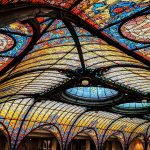
Nearest at 0.06 kms.
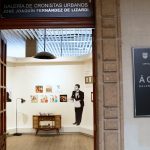
Nearest at 0.07 kms.
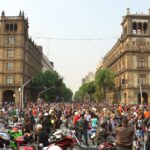
Nearest at 0.07 kms.

A landmark hotel on the edge of Mexico City's main plaza . . .

One of the most important sites in the city, even today, don't miss the chance to visit the Templo Mayor.
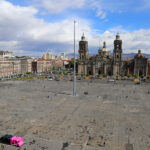
There's no center like the very center, and in Mexico City, that means el Zócalo!
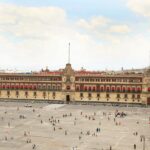
One of Mexico City's proudest, most enormous parts of history, the Palacio dominates the entire east of the Zocalo.

The first Cathedral to have been built in the Americas.